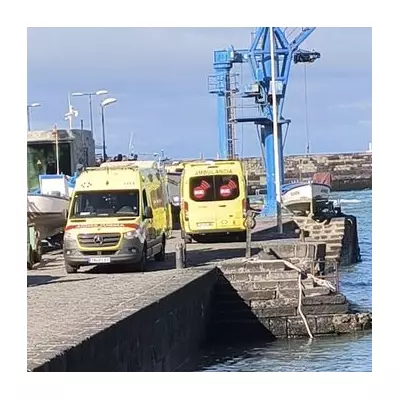
When you picture a cruise holiday, you imagine sunshine, cocktails, and carefree days at sea. But behind the glamorous facade, cruise lines have meticulously planned protocols for dealing with the ultimate emergency: passenger deaths onboard.
In an unprecedented revelation, major cruise companies have disclosed their carefully choreographed procedures for handling fatalities during voyages. These protocols transform floating resorts into temporary floating mortuaries when tragedy strikes.
The Cold Reality: Shipboard Morgues
Every large cruise ship contains a secret most passengers never see - a refrigerated morgue capable of storing multiple bodies. These temperature-controlled facilities are standard equipment, strategically located in the medical centre and accessible only to authorised medical staff.
"The number of bodies a morgue can hold depends entirely on the ship's size and passenger capacity," explains a cruise industry insider. "Larger vessels are equipped to handle the statistical reality that with thousands of passengers, many elderly, deaths occasionally occur."
Immediate Response: The First Critical Hours
When a passenger is declared deceased, a precisely timed sequence of events begins:
- The body is immediately transferred to the ship's medical facility
- Professional staff prepare and refrigerate the remains
- The captain is notified and relevant authorities alerted
- Family members receive compassionate support from specially trained crew
"Our crew undergo extensive training to handle these situations with dignity and discretion," says a cruise line representative. "The priority is caring for the deceased while supporting grieving loved ones."
Navigating International Waters: Legal Complexities
The location of the ship when death occurs creates a complex web of jurisdictional challenges. Cruise lines must navigate:
- International maritime law
- The legal requirements of the ship's flag state
- Regulations of the nearest coastal nation
- Laws of the passenger's home country
In territorial waters, the local authorities typically take charge. On the high seas, the protocol depends on the ship's registration country and the cruise line's corporate policies.
Returning Home: The Repatriation Process
Getting a body back to their home country involves a daunting administrative process:
- Obtaining an official death certificate from relevant authorities
- Arranging embalming or special preservation if required
- Coordinating with international funeral directors
- Managing complex customs and import regulations
- Organising transportation from often-remote ports
"This is often the most challenging phase for families," notes an industry expert. "The paperwork and logistics can be overwhelming, which is why cruise lines have dedicated teams to assist."
The Human Element: Supporting Grieving Families
Cruise lines emphasise that behind every procedure lies a human tragedy. Specially trained care team members provide:
- Private accommodation changes if needed
- Assistance with communication and arrangements
- Emotional support throughout the process
- Help navigating insurance and financial matters
Most cruise tickets include clauses about the line's responsibility in such events, but companies typically go beyond contractual obligations to support affected families.
While statistically rare - with approximately 200 deaths occurring annually across 30 million cruise passengers - these protocols represent the cruise industry's sober preparation for life's final journey at sea.





